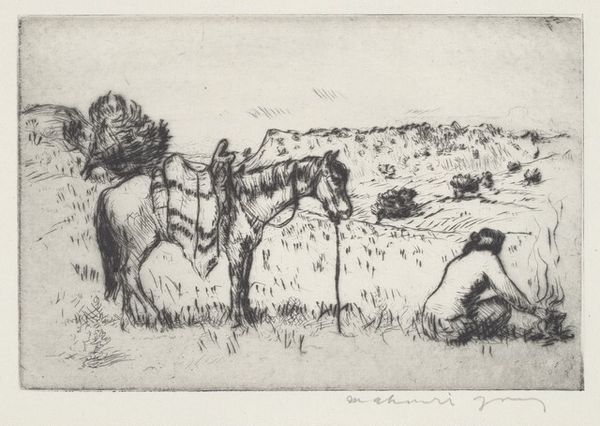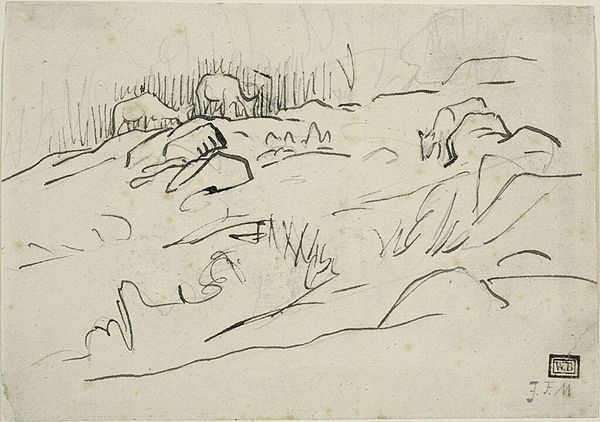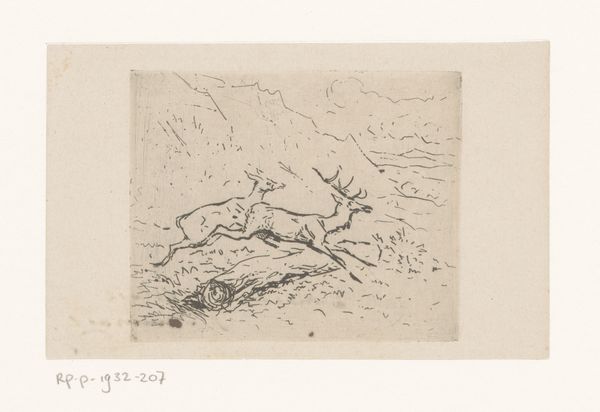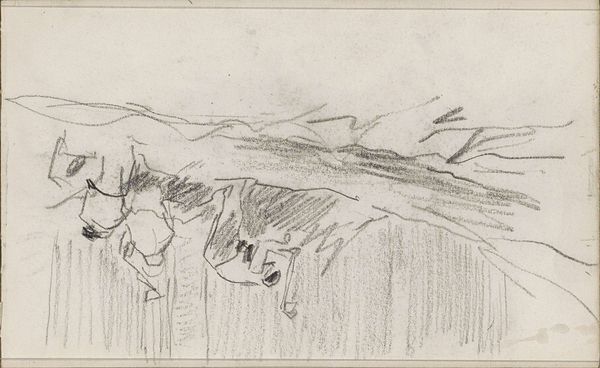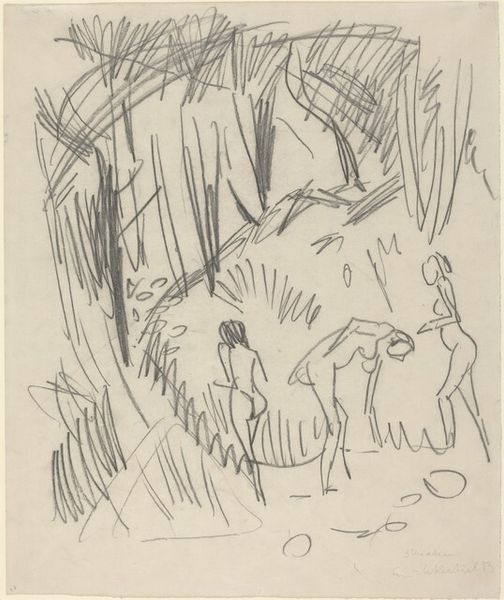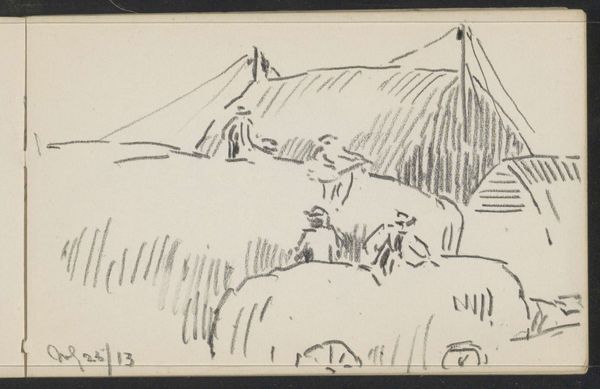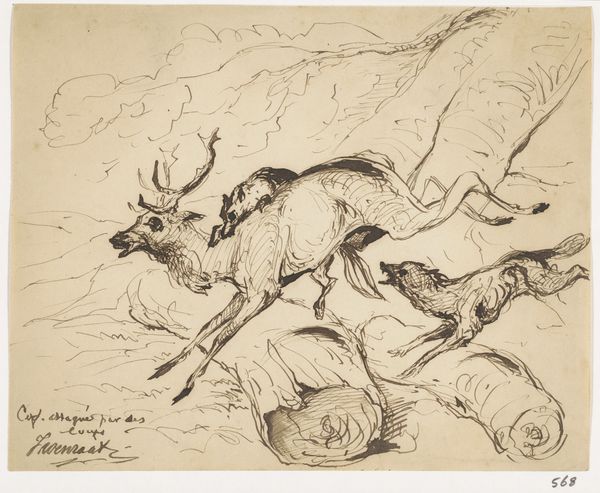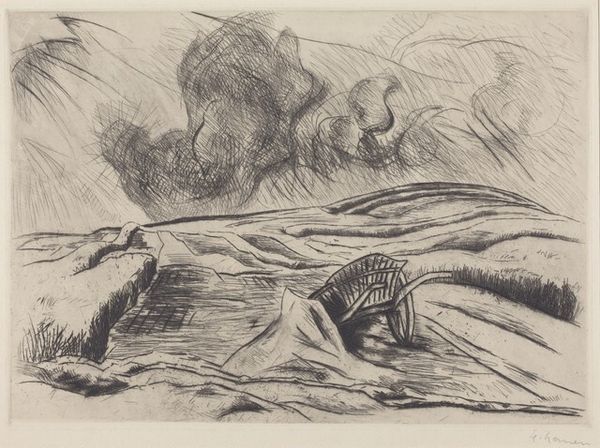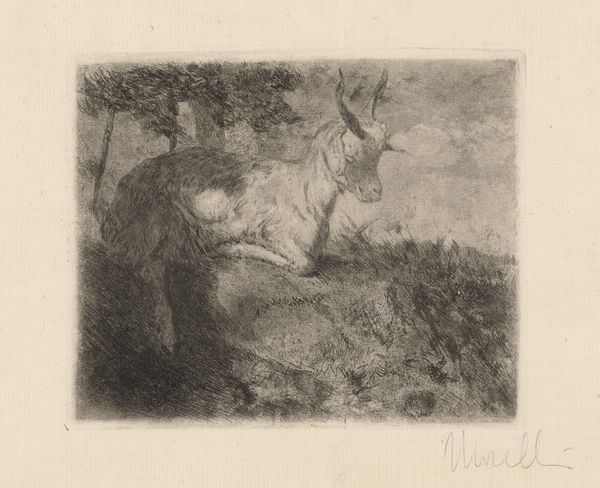
#
amateur sketch
#
ink drawing
#
quirky sketch
# print
#
pen sketch
#
pencil sketch
#
personal sketchbook
#
ink drawing experimentation
#
pen-ink sketch
#
sketchbook drawing
#
sketchbook art
Dimensions: plate: 8.3 x 19.8 cm (3 1/4 x 7 13/16 in.) sheet: 25.4 x 35.7 cm (10 x 14 1/16 in.)
Copyright: National Gallery of Art: CC0 1.0
Curator: Here we have Milton Avery's "Japanese Landscape," created in 1939. It's a print, seemingly a lithograph or etching, rendered in monochrome. What strikes you first about it? Editor: Immediately, the rawness. It feels like a direct transfer from sketchbook to print, the kind of image where the artist is trying to quickly capture an essential feeling, perhaps something about humanity's place within the vastness of nature. Curator: That "sketchbook" feel resonates. Look at the lines; they are sparse yet carry a remarkable amount of information. Trees become graphic shapes. There's an intentional crudeness, perhaps influenced by traditional East Asian art? Avery, of course, titled it "Japanese Landscape." Editor: Yes, that title! It is Avery attempting to transpose an East Asian sensibility to an American scene? Consider the socio-political context of 1939; as tensions rose in Europe, there was an increased interest and imagined idealization of the "Orient." Could this work engage with such orientalist sentiments? Curator: Intriguing perspective. It can also be interpreted more simplistically, just pure aesthetics – trees as calligraphic strokes, the horizon as a gentle suggestion. Notice the recurring motif of the tree—a near universal symbol of connection, of roots…it makes me think of ancestral knowledge, and cultural exchange. Editor: Cultural exchange is seldom simple, though, and "Japanese Landscape", intentionally or not, engages with complex cultural power dynamics of the time. Even his very simplified style reflects broader modernist trends of deconstruction. Curator: Perhaps! Its apparent simplicity opens numerous symbolic paths. Regardless, it showcases Avery's mastery in distilling a landscape down to its essence with such limited means. It also represents his ability to use the black-and-white print medium to evoke a spectrum of feelings. Editor: It challenges us to look beyond the mere picturesque. Its incompleteness, the sketchiness, forces us to contemplate not just the image, but the act of seeing itself within these loaded global relationships. Curator: True. The landscape becomes less a place, more an idea... and our understanding changes with each passing year. Editor: And that dialogue, that continual reimagining, is what makes works like Avery's so persistently compelling.
Comments
No comments
Be the first to comment and join the conversation on the ultimate creative platform.

